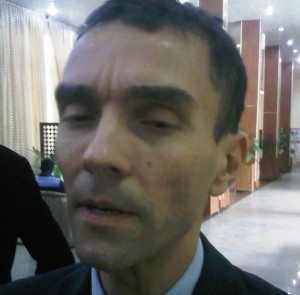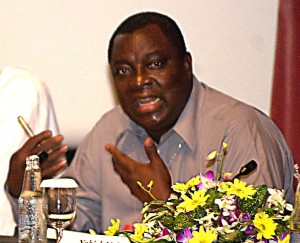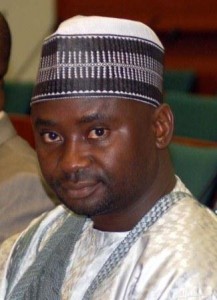Nigerians are not in a hurry to forget the widespread flooding that ravaged a considerable part of the nation in 2012. The disaster was unprecedented in the country’s history. Despite warnings of heavy rains in 2013, the flooding of last year’s magnitude is however yet to manifest.

But it was enough to jolt the Federal Government from its reverie and into taking action towards addressing emergencies. The National Disaster Recovery Strategy/Framework and 2012 Flood Recovery Action Plan, as the document is christened, is being prepared in collaboration with the United Nations Development Programme (UNDP) and the World Bank.
After the flooding, government, with support of World Bank/Global Facility for Disaster Reduction and Reconstruction (GFDRR), United Nations Systems, European Union (EU) and other Development Partners conducted a Post Disaster Needs Assessment (PDNA) of 2012 flood disaster from November to December, 2012.
The scope of the PDNA included estimating the effects and impacts of the 2012 floods, estimating the financial requirements to overcome the impact of the disaster through a set of well-defined recovery and reconstruction with disaster- resilience features, and defining a strategy to reduce disaster risk that can be applied in the long term.
The final report of the PDNA was disseminated to all stakeholders, followed by a series of review stakeholders meetings in June 2013, where recommendations contained in the report were reviewed with a view to developing short-term recovery and reconstruction framework, and prioritised actions for future implementation.
As a follow-up to that engagement, stakeholders a week ago converged on Abuja, the federal capital city, to review and validate both the National Disaster Recovery Strategy and Framework and the Nigeria 2012 Floods Recovery Plan.
The UNDP Deputy Country Director in Nigeria, Bernardo Coco, at the forum said the Action Plan was developed with the support of UNDP “as part of a broader strategic response to addressing the broader challenges of disaster management in Nigeria, arising from the lessons learnt from the 2012 floods.”
According to him, UNDP’s partnership with the National Emergency Management Agency (NEMA) predated the 2012 floods, stating that NEMA was supported in the institutional mapping of all ongoing efforts in Disaster Risk Reduction (DRR), the Nigeria Disaster Risk Reduction Capacity Assessment, and development of a National Action Plan for Disaster Risk Reduction.

In direct response to the floods however, he said that aside from coordinating the UN systems inputs into the PDNA, it also supported the preliminary humanitarian assessment, undertook a community consultation and validation surveys in partnership with the six Nigerian universities centres for disaster management as a critical part of the human recovery needs assessment (HRNA).
“Consultations are also already ongoing on developing a DRR project, which will be implemented by NEMA,” he said, even as he commended the Director General of NEMA, Sani Sidi, “for his foresight and leadership which has resulted in the development of these strategic documents and to also assure him of UNDP’s continued support in their implementation, going forward.”
A UNDP consultant on the project, Professor Seth Vordzorgbe, noted that the time has come for Nigeria to look at how it can recover from emergencies, adding that the country has a strong framework in terms of policies and institutions, “some of which are not complete but are in the process of being completed, but they need to be operationalised and, one of the areas is how do we recover from disasters when they occur? So, the government requested the assistance of the UNDP to help to develop a recovery framework.”
Vordzorgbe, a Ghanaian, said his impression is that “the timing is good, the enthusiasm is there, the will of government is strong and the way we have a lot of participation from states and other stakeholders that their buying in to the process is strong as well. It bodes well for its implementation if the resources are there.”

Vordzorgbe said Nigeria is putting an appreciative system in place for response but that it needed to be activated more often and systematically at the various levels. “But the framework does exist. However, there is no concrete integrated framework and there is where the gap lies. This builds on the disaster response plan which was prepared in 2001, which itself needs to be revised because of its complex nature.”
On the timeframe needed to put the action in place, he said when the revalidation stage was over, it would be finalised and that the next step would be its formal approval. “I cannot give you a very definite timeline but there are other things being planned to move this process forward. One of these is that UNDP is developing a project with NEMA to finalise these frameworks, to rationalise them, and to also do a national preparedness framework.”
He said the framework being prepared was for recovery that is very modern “if you compare the countries of the world. This is the first of its kind in Africa and it is modelled on that of the US, the UK, New Zealand and so it is the state-of-the-arts. Even the United States FEMA did its recovery framework in 2011. So, this is the most recent but the question is operationalisation that is the will and the funding to make that happen.”
On funding, he said, “This is not a project at such but a framework that should guide action. So, depending on the disaster and the time it will take to recover. One of the elements in this framework is financing of disaster recovery.”
He said it was not about funding but financing of recovery because “funding limits itself to government funding but financing brings in all the options, including tax concessions, investment allowances. For example, in the last flood when businesses were destroyed in Anambra State and the rest, one of the things that could have been done is to say let’s give physical rebate as a way of giving the business owners come back on track. Perhaps their tax obligations for this year could be cut down, not necessarily waived, and given an extended time to meet them. So, we take a holistic approach to financing disaster management and not just funding.”
In financing flood disaster recovery, he said there is a role for everyone. “They were able to mobilise large sums of money in the Presidential task force. That is one good example and this is about the second time I have heard this was done. The first was in Kenya during the drought of 2011 where civil society and business interest came round to mobilise funding. The private sector here in Nigeria can actually do a lot more.”
Director General of NEMA, Sani Sidi, said the document is being prepared against the backdrop of 2012 unprecedented flood that caused widespread devastation in several states of the country. “To me, that experience serves as a wakeup call for NEMA and her stakeholders to fashion out lasting workable guidelines of operations towards Disaster Risk Reduction and improving our national resilience.”
He said one of the strategic priorities of the agency is to reposition the country by providing a solid foundation and frameworks for building a national and community resilience to reduce all related disaster risks towards actualising the gains of any developmental strides aimed at total transformation for rapid socio-economic development of our great country.
“To achieve this strategic objective therefore, the National Emergency Management Agency (NEMA) has developed various policy frameworks and programme instruments to guide Disaster Risk and Emergency Management,” he said.
